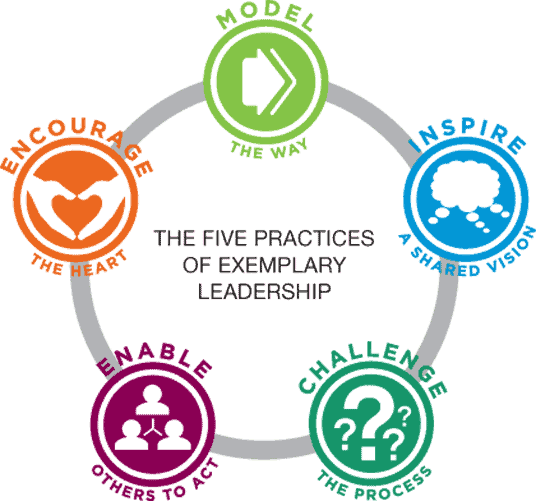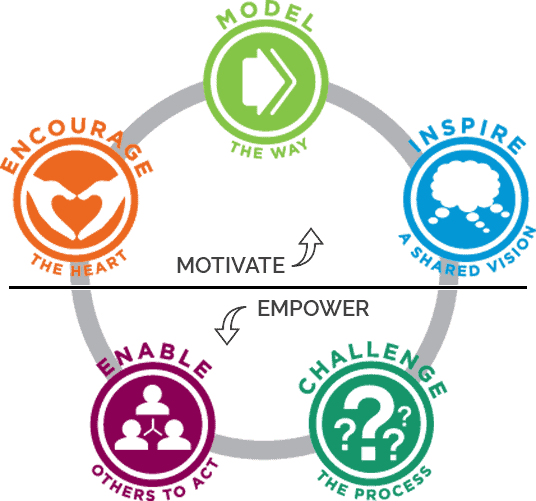So you’ve learned about Agile project management. Maybe you’ve become a certified Scrum Master. You’re applying at least some of these principles to your projects. But how does Agile impact leadership? And how can you use Agile to become a better leader?
I had the opportunity to attend a PMI-sponsored training workshop to gain insight into the marriage of Leadership with Agile principles
The course was conducted as an interactive workshop. It had plenty of exercises meant to illustrate key concepts. Even the agenda was run as a Task Board, complete with a whiteboard-burndown chart to track our progress.
This format enabled a more effective training experience. As a result, we had more targeted discussion and tactical advice, from the instructor and also from each other. These provided tips and tools we could take back to our jobs and put into practice.
What Makes a Good Leader?
Much of the workshop focused on defining what good leadership means and what traits and practices we associate with good leaders.
As an example, Jim Kouzes and Barry Posner, authors of The Leadership Challenge and other award-winning books on leadership, have identified five practices of exemplary leadership. This model (image below) is based on more than 30 years of research, and it formed the basis of our discussions around Agile and Leadership.

Model the Way: Create standards of excellence and then “walk the talk” to consistently model desired behaviors.
Inspire a Shared Vision: Have a vision for what happens when the project is completed and bring the team into that vision.
Challenge the Process: Innovate by experimenting. Celebrate small wins and look at setbacks as learning opportunities.
Enable Others to Act: Establish culture of empowerment, mutual trust, and respect. Actively encourage and support inclusion and collaboration.
Encourage the Heart: Highlight community and value team input. Set high expectations and recognize those who meet them. Foster accountability and appreciation.
The remainder of the workshop focused on how Agile and Leadership impact each other.
How Does Agile Impact Leadership?
Agile impacts the organization. Not just an individual team or a single department. Leaders in Agile must continuously and diligently reinforce this important concept.
–Steven Martin, instructor, Catapult Your Leadership Capabilities Using Agile Principles at PMI 2018 Seminars World
Success in adopting Agile hinges on defeating many operational challenges. One of these challenges is to avoid the common pitfall of trying to “do Agile” rather than “be Agile”.
To really become Agile, leaders must view Agile as a mindset and apply the principles to more than just methodology:
- Align organizational philosophy and culture
- Garner management support
- Encourage collaboration
- Welcome change
All these factors fall within the scope of leadership. Consequently, leaders need to be mindful of them to successfully adopt Agile.
There are many forms of Agile: Scrum, Kanban, Extreme Programming, and others. But leaders can establish a common view for any Agile project in terms of risk, transparency, limits, efficiency, and data-informed vs. data-driven decisions.
Leaders must adopt an Agile mindset and apply it to how they support their teams. For each role on your Agile team(s) – Scrum Master, Product Owner, Team Member, Stakeholder – here are some questions to consider:
- What leadership support might each role need? For example, a Scrum Master might need to be empowered. On the other hand, a Product Owner might need transparency.
- What about roles in non-scrum Agile models? For example, a Kanban project leader must adjust stakeholder expectations for predictable delivery since there are no sprints or timeline. In the same vein, s/he must find a way to maintain team focus in the absence of a Scrum Master.
- How might you provide this support?
How Can You Use Agile to Become a Better Leader?
Wouldn’t it be great to have a ready-made, Buzzfeed-style list that instructs you to “Do These 29 Things to be the Perfect Leader (Number 19 Will Blow Your Mind)”?
Unfortunately, real life doesn’t work that way. The specific organization, project, team, and culture are all situational factors that can help or hinder leadership success.
Agile, by its very definition, is about adapting to particular situations. The context of an Agile project will influence how a leader can be most effective.
Whether or not your team is using an Agile framework to do its work, Agile principles can be used to improve your leadership practices on any type of team.
The five leadership practices really come down to two imperatives: Motivate and Empower. Both can benefit from an Agile mindset. Back to the Leadership Challenge diagram, we can see how they map:

Motivate (Encourage/Model/Inspire)
According to Daniel Pink’s Drive: The Surprising Truth About What Motivates Us, the key components of motivation are Autonomy, Mastery, and Purpose.
These factors mesh well with the principles of Agile:
- Self-organized, self-managed teams (Autonomy)
- Continuous learning (Mastery)
- Shared vision (Purpose)
Some motivation questions to consider:
- How could you work elements of autonomy, mastery, and purpose into Scrum ceremonies to inspire and motivate your team?
- In a Kanban model, how can you use these elements to motivate teams in the absence of timed tasks and deadlines?
- For traditional Waterfall, where there are long stretches of time without delivery, how do you maintain a shared vision and customer buy-in? Can you introduce elements of feedback, reflection, and interim wins along the way?
Empower (Enable/Challenge)
Although Agile centers on self-organized teams, that doesn’t mean leadership is not required. Leadership is essential, but it looks a bit different. That difference is empowerment. One of the most difficult to master, but most effective, aspects of leadership is the art of empowering people.
Above all, the best (and hardest) thing you can do is give your team the challenge, parameters, and operating guidelines, and then get out of their way. Be ready to help if they need it but give them space to try things out and make mistakes.
Some empowerment questions to consider:
- Can you adapt how you provide guidance and feedback to self-organized Scrum or Kanban team members? Can you embrace the risk of easing up on controls?
- What are some changes you could make now to empower your Waterfall team? How can you provide a way for team members to challenge and influence how they work together?
In summary, Agile leadership is transformational, rather than transactional.
- Team management has historically taken a transactional approach. But this approach assumes a level of certainty in your domain and environment.
- By contrast, transformational leadership urges you to adapt to emerging events.
Agile teams require transformational leaders. You can evolve your leadership skills by applying the principles and overall change mindset of Agile itself.
